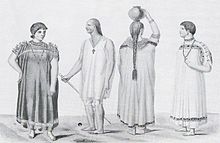The Jesuit Missions of Chiquitos are located in Santa Cruz department in eastern Bolivia. Six of these former missions (all now secular municipalities) collectively were designated as a UNESCO World Heritage Site in 1990. Distinguished by a unique fusion of European and Amerindian cultural influences, the missions were founded as reductions or reducciones de indios by Jesuits in the 17th and 18th centuries to convert local tribes to Christianity.
The interior region bordering Spanish and Portuguese territories in South America was largely unexplored at the end of the 17th century. Dispatched by the Spanish Crown, Jesuits explored and founded eleven settlements in 76 years in the remote Chiquitania – then known as Chiquitos – on the frontier of Spanish America. They built churches (templos) in a unique and distinct style that combined elements of native and European architecture. The indigenous inhabitants of the missions were...Read more
The Jesuit Missions of Chiquitos are located in Santa Cruz department in eastern Bolivia. Six of these former missions (all now secular municipalities) collectively were designated as a UNESCO World Heritage Site in 1990. Distinguished by a unique fusion of European and Amerindian cultural influences, the missions were founded as reductions or reducciones de indios by Jesuits in the 17th and 18th centuries to convert local tribes to Christianity.
The interior region bordering Spanish and Portuguese territories in South America was largely unexplored at the end of the 17th century. Dispatched by the Spanish Crown, Jesuits explored and founded eleven settlements in 76 years in the remote Chiquitania – then known as Chiquitos – on the frontier of Spanish America. They built churches (templos) in a unique and distinct style that combined elements of native and European architecture. The indigenous inhabitants of the missions were taught European music as a means of conversion. The missions were self-sufficient, with thriving economies, and virtually autonomous from the Spanish crown.
After the expulsion of the Jesuit order from Spanish territories in 1767, most Jesuit reductions in South America were abandoned and fell into ruins. The former Jesuit missions of Chiquitos are unique because these settlements and their associated culture have survived largely intact.
A large restoration project of the missionary churches began with the arrival of the former Swiss Jesuit and architect Hans Roth in 1972. Since 1990, these former Jesuit missions have experienced some measure of popularity, and have become a tourist destination. A popular biennial international musical festival put on by the nonprofit organization Asociación Pro Arte y Cultura along with other cultural activities within the mission towns, contribute to the popularity of these settlements.
In the 16th century, priests of different religious orders set out to evangelize the Americas, bringing Christianity to indigenous communities. Two of these missionary orders were the Franciscans and the Jesuits, both of which eventually arrived in the frontier town of Santa Cruz de la Sierra and then in the Chiquitania. The missionaries employed the strategy of gathering the often nomadic indigenous populations in larger communities called reductions in order to more effectively Christianize them. This policy sprang from the colonial legal view of the “Indian” as a minor, who had to be protected and guided by European missionaries so as not to succumb to sin. Reductions, whether created by secular or religious authorities, generally were construed as instruments to force the natives to adopt European culture and lifestyles and the Christian religion. The Jesuits were unique in attempting to create a theocratic "state within a state" in which the native peoples in the reductions, guided by the Jesuits, would remain autonomous and isolated from Spanish colonists and Spanish rule.[1]
Arrival in the Viceroyalty of PeruWith the permission of King Philip II of Spain a group of Jesuits traveled to the Viceroyalty of Peru in 1568, some 30 years after the arrival of the Franciscans, Dominicans, Augustinians and Mercedarians. The Jesuits established themselves in Lima in 1569 before moving east toward Paraguay; in 1572 they reached the Audience of Charcas in modern-day Bolivia. Because they were not allowed to establish settlements on the frontier they built chapter houses, churches and schools in pre-existing settlements, such as La Paz, Potosí and La Plata (present day Sucre).[2][3]
In 1587 the first Jesuits, Fr. Diego Samaniego and Fr. Diego Martínez, arrived in Santa Cruz de la Sierra, located just south of where the future mission of San José de Chiquitos would be established. In 1592 the settlement had to be moved 250 kilometres (160 mi) west because of conflicts with natives, although the remains of the original town exist in the Santa Cruz la Vieja archaeological site. The Jesuits did not start missions in the valleys northeast of the cordillera until the 17th century. The two central areas for their activities were Moxos, situated in the department of Beni, and the Chiquitania (then simply Chiquitos) in the department of Santa Cruz de la Sierra.[3] In 1682, Fr. Cipriano Barace founded the first of the Jesuit reductions in Moxos, located at Loreto.
The Jesuits in the Chiquitania America in 1705
America in 1705 Map from 1732 depicting Paraguay and Chiquitos with the missions San Xavier (S. Xavier), Concepción (Concepc.), San Rafael de Velasco (S. Raphael), San Miguel de Velasco (S. Miguel), San José de Chiquitos (San Joseph) and San Juan Bautista (S. Juan).
Map from 1732 depicting Paraguay and Chiquitos with the missions San Xavier (S. Xavier), Concepción (Concepc.), San Rafael de Velasco (S. Raphael), San Miguel de Velasco (S. Miguel), San José de Chiquitos (San Joseph) and San Juan Bautista (S. Juan).While the mission towns in Paraguay flourished, the evangelization of the Eastern Bolivian Guarani (Chiriguanos) proved difficult. With encouragement from Agustín Gutiérrez de Arce, the governor of Santa Cruz, the Jesuits focused their efforts on the Chiquitania, where the Christian doctrine was more readily accepted.[4] Between 1691 and 1760 eleven missions were founded in the area;[5] however, fires, floods, plagues, famines and conflict with hostile tribes or slave traders caused many missions to be re-established or rebuilt.[6] The Chiquitos missions suffered from periodic epidemics of European diseases killing up to 11 percent of the population in a single episode. However, the epidemics were not as severe as they were among the Paraguayan Guarani to the east, mainly because of their remote locations and the lack of transportation infrastructure.[7][8]
The first Jesuit reduction in the Chiquitania was the mission of San Francisco Xavier, founded in 1691 by the Jesuit priest Fr. José de Arce. In September 1691, de Arce and Br. Antonio de Rivas intended to meet seven other Jesuits at the Paraguay River to establish a connection between Paraguay and Chiquitos. However, the beginning of the rainy season brought bad weather, and Arce and his companion only got as far as the first native village. The local Piñoca tribe, who were suffering from a plague, begged Arce and Rivas to stay and promised to build a house and a church for the Jesuits, which were finished by the end of year. The mission was later moved a number of times until 1708 when it was established in its present location.[4]
Ten more missions were founded in the Chiquitania by the Jesuits in three periods: the 1690s, the 1720s, and after 1748. In the 1690s, five missions were established: San Rafael de Velasco (1696), San José de Chiquitos (1698), Concepción (1699) and San Juan Bautista (1699). San Juan Bautista is not part of the World Heritage Site, and only the ruins of a stone tower survive near the present village of San Juan de Taperas.
The War of the Spanish Succession (1701–1714) caused a shortage of missionaries and instability in the reductions, so no new missions were built during this period. By 1718 San Rafael was the largest of the Chiquitos missions, and with 2,615 inhabitants[7] could not sustain a growing population. In 1721 the Jesuits Fr. Felipe Suárez and Fr. Francisco Hervás established a split-off of the San Rafael mission, the mission of San Miguel de Velasco. To the south, San Ignacio de Zamucos was founded in 1724 but abandoned in 1745; today nothing remains of the mission.[4][8]
A third period of mission foundations began in 1748 with the establishment of San Ignacio de Velasco, which was not declared a part of the World Heritage Site. The church is nonetheless a largely faithful 20th-century reconstruction – as opposed to renovation (a key criterion for inclusion in the World Heritage Site group) – of the second Jesuit templo built in 1761. In 1754 the Jesuits founded the mission of Santiago de Chiquitos. This church also is a reconstruction, dating from the early 20th century and likewise is not part of the World Heritage Site group. In 1755 the mission of Santa Ana de Velasco was founded by the Jesuit Julian Knogler; it is the most authentic of the six World Heritage Site missions dating from the colonial period. The last mission in the Chiquitania to be established was founded by the Jesuits Fr. Antonio Gaspar and Fr. José Chueca as Santo Corazón in 1760. The local Mbaya peoples were hostile to the mission[9] and nothing of the original settlement remains in the modern village.[6][3]
The Jesuits in the Chiquitania had a secondary objective, which was to secure a more direct route to Asunción than the road then being used via Tucumán and Tarija to link the Chiquitania with the Jesuit missions in Paraguay.[10] The missionaries in Chiquitos founded their settlements increasingly further east, towards the Paraguay River, while those south of Asunción moved closer to the Paraguay River by establishing their missions increasingly farther north, thereby avoiding the impassable Chaco region. Although Ñuflo de Chávez had attempted a route through the Chaco on an expedition as early as 1564, subsequent Jesuit explorations from Chiquitos (e.g. in 1690, 1702, 1703, and 1705) were unsuccessful. The Jesuits were stopped by the hostile Payaguá and Mbayá (Guaycuruan-speaking tribes), and by the impenetrable swamps of Jarayes. In 1715, de Arce, the co-founder of the first mission in San Xavier, set out from Asunción on the Paraguay River with the Flemish priest Fr. Bartolomé Blende. Payaguá warriors killed Blende during the journey, but de Arce struggled on to reach San Rafael de Velasco in the Chiquitania. On the return trip to Asunción he too was killed in Paraguay. Not until 1767, when the missions had encroached sufficiently on the hostile region and just before the Jesuits were expelled from the New World, did Fr. José Sánchez Labrador manage to travel from Belén in Paraguay to Santo Corazón, the easternmost Chiquitos mission.[2]
Expulsion and recent development Population in the Jesuit Missions of Chiquitos
Population in the Jesuit Missions of ChiquitosIn 1750 as a result of the Treaty of Madrid seven missions in present-day Rio Grande do Sul state in Brazil were transferred from Spanish to Portuguese control. The native Guaraní tribes were unhappy to see their lands turned over to Portugal (their enemy for over a century) and they rebelled against the decision, leading to the Guarani War.[11] In Europe, where the Jesuits were under attack, they were accused of supporting the rebellion and perceived as defending the native peoples.[11] In 1758, the Jesuits were accused of a conspiracy to kill the king of Portugal, known as the Távora affair.[12] All members of the Society of Jesus were evicted from Portuguese territories in 1759,[13] and from French territories in 1764.[14] In 1766 Jesuits were accused of causing Esquilache Riots in Madrid; consequently in February 1767, Charles III of Spain signed a royal decree with expulsion orders for all members of the Society of Jesus in Spanish territories.[11]
From then on, spiritual and secular administration were to be strictly separated.[15] At the time of the expulsion, 25 Jesuits served a Christianized population of at least 24,000,[nb 1] in the ten missions of the Chiquitania.[7] The Chiquitos mission properties included 25 estancias (ranches) with 31,700 cattle and 850 horses. Libraries across the settlements held 2,094 volumes.[16]
By September 1767, all but four Jesuits had left the Chiquitania, and they went the following April. The Spanish considered it essential to maintain the settlements as a buffer against Portuguese expansion. The archbishop of Santa Cruz de la Sierra, Francisco Ramón Herboso, established a new system of government, very similar to that set up by the Jesuits. He stipulated that each mission be run by two secular (parish) priests, one to take care of the spiritual needs while the other was in charge of all other – political and economic – affairs of the mission administration. One change was that the Indians were allowed to trade. In practice, the shortage of clergy and the low quality of those appointed by the bishop – almost all of whom did not speak the language of the local peoples and in some cases had not been ordained – led to a rapid general decline of the missions. The priests also broke ethical and religious codes, appropriated the major part of the missions' income and encouraged contraband trade with the Portuguese.[15][17]
Within two years of the expulsion, the population in the Chiquitos missions dropped below 20,000.[18] Despite the general decline of the settlements, however, the church buildings were maintained and, in some cases, extended by the towns' inhabitants. The construction of the church in Santa Ana de Velasco falls into this period. Bernd Fischermann, an anthropologist who studied the Chiquitano, suggests three reasons that the Chiquitano preserved the heritage of the Jesuits even after their expulsion:[19] the memory of their prosperity with the Jesuits; the desire to appear as civilized Christians to mestizos and white people; and to preserve the ethnicity that originated from a mix of various culturally distinct groups blended by an enforced common language[nb 2] and customs learned from the Jesuits.
 Converted Chiquitos Indians in a drawing by Alcide d'Orbigny from 1831
Converted Chiquitos Indians in a drawing by Alcide d'Orbigny from 1831In January 1790, the Audiencia of Charcas ended the diocese’s mismanagement, and temporal affairs were delegated to civil administrators, with the hope of making the missions economically more successful.[15] Sixty years after the expulsion of the Jesuits the churches remained active centers of worship, as the French naturalist Alcide d'Orbigny reported during his mission to South America in 1830 and 1831. Although much diminished economically and politically, the culture the Jesuits established was still evident. According to d'Orbigny, the music at a Sunday mass in San Xavier was better than those he had heard in the richest cities of Bolivia.[20][21] The population of the Chiquitania missions reached a low of around 15,000 inhabitants in 1830.[4] In 1842 the Comte de Castelnau visited the area and, referring to the church in Santa Ana de Velasco, proclaimed: "This beautiful building, surrounded by gardens, presents one of the most impressive views imaginable."[18]
By 1851, however, the reduction system of the missions had disappeared. Mestizos who had moved to the area in their quest for land began to outnumber the original indigenous population. Starting with the creation of the Province of José Miguel de Velasco in 1880, the Chiquitania was split into five administrative divisions. With the rubber boom at the turn of the century, more settlers came to the areas and established large haciendas, moving the economic activities together with the native peoples out of the towns.[18]
In 1931, the spiritual administration of the missions was given to German-speaking Franciscan missionaries. Ecclesiastical control moved back to the area with the creation of the Apostolic Vicariate of Chiquitos in San Ignacio in that year. The churches not only serve the mestizo inhabitants of the villages but present spiritual centers for the few remaining indigenous peoples living in the periphery.[22]
In 1972, the Swiss architect and then-Jesuit priest Hans Roth began an extensive restoration project of the missionary churches and many colonial buildings that were in ruins. These churches exist in their present form as a result of Roth's effort, who worked on the restoration with a few colleagues and many local people until his death in 1999. The restoration works have continued sporadically into the beginning of the 21st century under local leadership.
Six of the reductions were listed as part of the World Heritage Site by UNESCO in 1990. The churches of San Ignacio de Velasco, Santiago de Chiquitos and Santo Corazón have been reconstructed from scratch and are not part of the World Heritage Site. In San Juan Bautista only ruins remain. UNESCO listed the site under criteria IV and V, acknowledging the adaption of Christian religious architecture to the local environment and the unique architecture expressed in the wooden columns and banisters. Recently ICOMOS, the International Council on Monuments and Sites, warned that the traditional architectural ensemble that makes up the site has become vulnerable following agrarian reforms from 1953 which threatened the fragile socioeconomic infrastructure of the region. At the time of the nomination, the World Heritage Site was protected by the Pro Santa Cruz committee, Cordecruz,[nb 3] Plan Regulador de Santa Cruz,[nb 4] and the local mayoral offices of the mission towns.[5]
Cite error: There are <ref group=nb> tags on this page, but the references will not show without a {{reflist|group=nb}} template (see the help page).































Add new comment